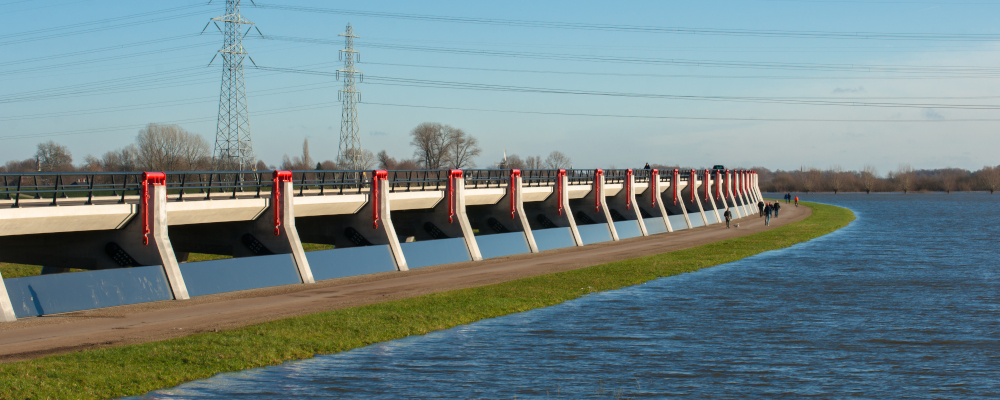Webinar Description:
It’s not uncommon to find those experiencing homelessness living in flood zones near levees or along dams. While this poses immediate risks to those unhoused populations, it can also affect safety inspections and certifications of the flood risk infrastructure. Flood risk managers have struggled with how to engage these populations while also managing the dams and levees.
Beginning in 2022, the California U.S. Army Corps of Engineers Silver Jackets team convened a series of interagency and interdisciplinary workshops to explore this issue. These workshops produced actionable steps for care-informed strategies to communicate with homeless populations that live along levees and waterways while maintaining community flood infrastructure.
Join project leaders as they discuss the challenges and risks associated with flood resilience, infrastructure, and unhoused communities. Attendees will learn about project outcomes and tangible actions that flood risk managers can take to provide flood resilience for all members of the community.
After registering, you will receive a confirmation email containing information on how to join the webinar.
Speakers:
Jessica Ludy, United States Army Corps of Engineers
Emily Marcil, United States Army Corps of Engineers
Communities across the US are grappling with the intense impacts of coastal, riverine and pluvial flooding, wildfires, and scorching heatwaves. To effectively plan and adapt to these climate challenges, public works agencies need climate data that’s not just accurate, but scalable and actionable. This data is crucial for designing resilient infrastructure, smart land-use strategies, and targeted emergency preparedness.
With cutting-edge advances in artificial intelligence, we’re seeing exciting breakthroughs in flood risk prediction that promise to help communities take proactive steps to mitigate their flood risks. However, the rise of proprietary private data can complicate things, raising concerns about the transparency and accuracy of the information being used. Public agencies need to navigate these complexities to make informed decisions that can reduce flood vulnerability.
To tackle these issues head-on, NAFSMA is launching a dynamic series of webinars and panels featuring top experts and practitioners. The first webinar kicks off on October 16th at 11 am Eastern with Professor Madison Condon from Boston University, who will delve into the climate services industry and offer insights on integrating climate data into effective planning.
Then, join us on October 30th at our annual meeting for an exciting panel discussion with FEMA, public agencies, and private companies, exploring the current and future landscape of flood risk data. Don’t miss these opportunities to stay ahead of the curve and enhance your community’s resilience!
FEMA Higher Education Program: 2024 Monthly Community Webinars
When: Third Friday of each month, 2:00–3:00 p.m. EST
Where: Via Zoom
Description: The recovery from the 2022 regional flooding in Montana’s Yellowstone Country began immediately after the acute response concluded. It is recognized that communities which experience successful disaster recovery are more resilient when confronting future disasters (Demiroz & Hu, 2014) – yet there is no consensus of what constitutes efficient and effective whole-community recovery among scholars or practitioners (Rubin, 2009). Furthermore, prior research on disaster recovery processes suggest recovery is not experienced uniformly across all groups within a community (Tierney & Oliver-Smith, 2012). Ultimately, much of community recovery activity emphasizes the navigation of federal aid processes and programs. Paradoxically, rural communities like those in Montana’s Yellowstone Country tend to be more susceptible to natural disasters like floods, droughts, and wildfires (Manuele & Haggerty, 2022), yet have smaller governmental structures, less diversified economies, and fewer financial reserves to handle disaster recovery and resiliency than their larger, urban counterparts (Waugh, 2013; Kapucu et al., 2013). Using a Community-Based Participatory Research (CBPR) approach, this study explores the differential experiences of disaster recovery across Montana’s Yellowstone region. By understanding gaps in post-disaster recovery, this project offers solutions to advance wholistic, equitable, and resilient preparedness and resiliency efforts in the future.
More Information: FEMA Higher Education Program | Community Webinars

